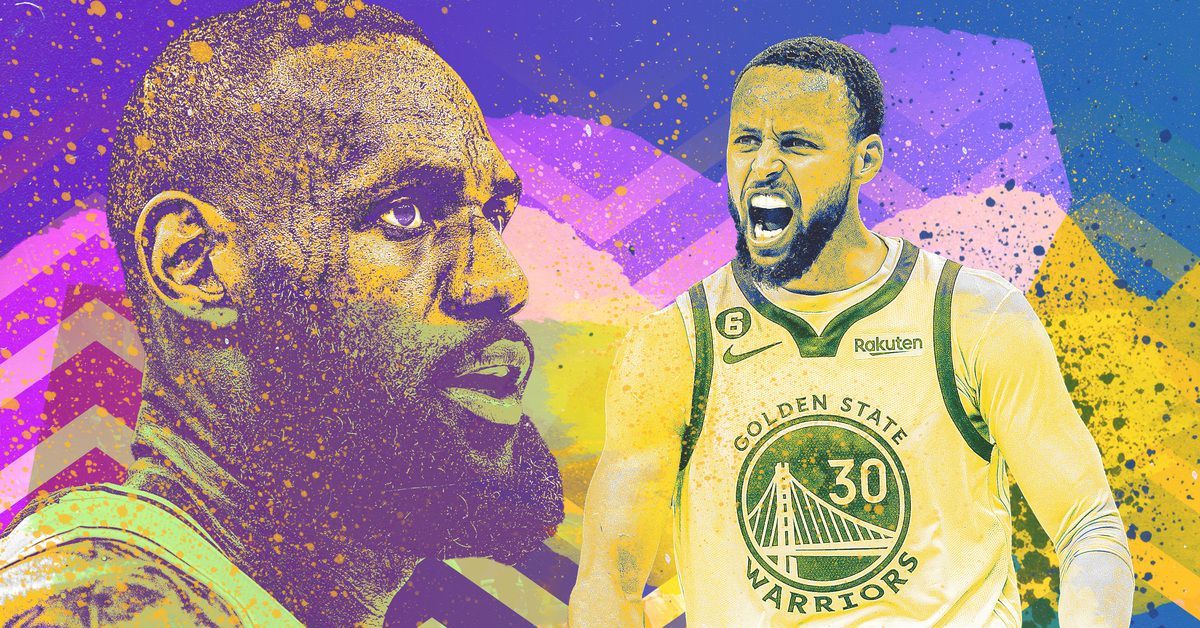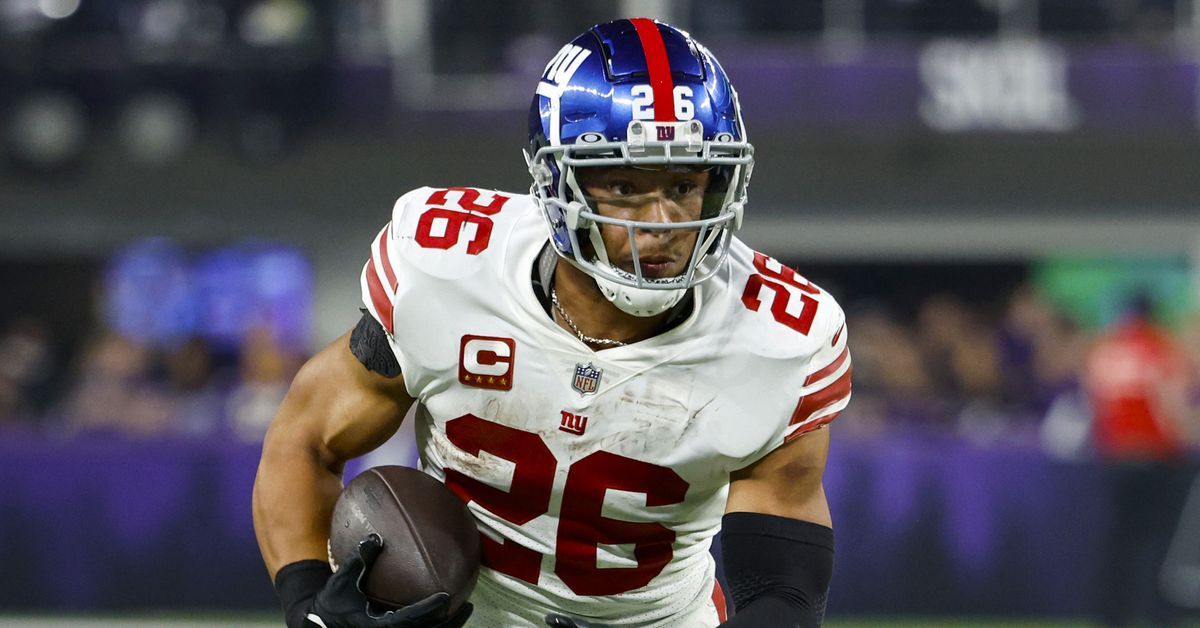Five Big Questions That Could Determine Lakers-Warriors
It’s hard to think of a more appealing matchup for the NBA (and its broadcast partners). Two of the league’s most recognizable brands, a pair of icons who’ve done more to revolutionize the sport than anybody since Michael Jordan, several other future Hall of Famers, and a shared history that’s the stuff of legends will all be on display.
The Golden State Warriors vs. Los Angeles Lakers is here. Thanks to an unforgettable Game 7 on Sunday afternoon that featured one of the most impressive playoff performances ever, Steph Curry vs. LeBron James is here. Anthony Davis, Draymond Green, Klay Thompson, and the great Austin Reaves are all set to convene for what could be a showstopping second-round event.
It’s hard to take anything meaningful away from the four matchups between these teams in the regular season. (The Lakers won three of them.) One came on opening night. The next came two days after the trade deadline, without James or Curry. The third was right after the All-Star break, with James and Davis combining for 25 points as Ty Jerome went off for 20 without Andrew Wiggins or Curry. LeBron and Wiggins missed their final encounter in early March.
The Ringer’s NBA Odds Machine Check out our daily predictions hub for the 2022-23 championship, the no. 1 overall pick, and more
But from what we know about both teams and how they played in Round 1, here are five questions that may decide who will reach the Western Conference finals.
How will the Lakers handle Steph Curry?
You know that scene in Deep Impact where Téa Leoni is standing on the beach, hugging her dad, waiting for a world-ending tidal wave to hit land? Steph is what happens when a comet crashes into the ocean. Coming off a 50-point Game 7 in Sacramento that has Rembrandt blushing, Curry is better than he’s ever been. Sticking Terence Davis on him instead of Davion Mitchell was a mistake, but it’s not one Mike Brown will lose much sleep over. Sometimes, there are no answers for greatness. This game was one such time.
It makes the heading of this blurb a trick question. There’s no way to handle Curry. He’s drilling pull-ups all over the court, shooting just over 60 percent inside the arc, always moving, and forever dragging two defenders toward him when the ball isn’t in his hands.
The Lakers can switch screens. They can put two on the ball. They can bring the big up in aggressive drop coverage. They can stick Jarred Vanderbilt on Curry and hope all that length and size will be a deterrent. They can instruct Reaves to take his flop magic to a different level. The book will be thrown at Curry; all of it will be futile. We’re apparently still in the part of Curry’s career where the only way to slow him down is to make him defend (hoping to tire someone out who doesn’t get tired), not foul, and pray.
Which version of Anthony Davis will show up?
It feels strange referring to a player like Davis—accomplished and often dominant—as an X factor. But the Lakers’ best player was up and down against Memphis in Round 1, bringing into question just how effective he can be, on both ends, in a matchup that could either showcase his strengths or spotlight his weaknesses.
On defense, Davis is most valuable against paint-dwelling teams that don’t pose a major threat from behind the 3-point line. This was evident against Memphis and exacerbated in Game 6, when, without Grizzlies guard Luke Kennard, Davis and the Lakers were able to pack the paint against lineups that had three or four non-shooters. In the series, the Grizzlies registered an effective field goal percentage of 41.1 percent with Davis as the closest defender (8.2 percentage points below what we would expect given their shot quality).
Now, to momentarily defy my claim above about how nothing serious can be gleaned from the regular-season series between these two teams, the Warriors’ effective field goal percentage with Davis as the closest defender was 43.1 percent in the regular season, which was 8.9 percentage points below their shot quality.
It’ll be fascinating to see how Steve Kerr responds to such a dominant paint protector. (Domantas Sabonis will probably make an All-NBA team but is a candle in the sun compared to peak AD on the defensive end.) Will Kerr start a lineup that’s obliterated everything in its path this season—including in Round 1—with Kevon Looney and Green together, or will he elect to bring Green off the bench and hope Jordan Poole or Donte DiVincenzo can stretch the floor?
Golden State last faced Davis in the playoffs when he was on the Pelicans five years ago. So much has changed since then, but tape of that series reveals how New Orleans head coach Alvin Gentry instructed his franchise player to roam off Green. The Warriors mustered only 103.3 points per 100 possessions when Davis was involved in a play, per Second Spectrum (they were at 112.8 during that regular season).
The Warriors are at their best when they space the floor, particularly if they utilize Steph Curry pick-and-rolls that pull Davis from the paint, yielding pull-up 3s, four-on-three advantages, and one-on-one confrontations that let the reigning Finals MVP cook. Golden State can flow out of that action in different ways too, like this stagger screen that goes straight into a flare for Thompson.
But against a humongous Lakers frontcourt, a small lineup would strain the Warriors on the other end. Guard-heavy groups leave Golden State vulnerable on the glass, where Davis can wreak havoc and create second-chance opportunities. The smart money is on Kerr starting Draymond and Looney in an attempt to snuff out an inept Lakers half-court offense and then slingshot the Warriors into the open floor—more on that later—where transition 3s from Klay, Steph, and Wiggins can sway the game in Golden State’s direction.
But even when the Warriors are big, Davis is long, aggressive, and skilled enough to demolish single coverages that Sabonis could not handle. The last time these two teams squared off, Davis obliterated Golden State with 39 points, eight rebounds, six assists, and two blocks.
If Davis stays healthy, moves well, and commits himself to pummeling Looney and Green on the glass, it’ll open up an offense that’s really struggled in the half court.
How healthy is LeBron James?
I’ll have a lot more on this later this week, but broadly speaking, James is both awesome and not himself right now. He’s 38 years old, is battling a foot injury, and was visibly exhausted late in the play-in game and throughout the first round. His numbers were fine against Memphis—22.2 points, 11.2 rebounds, and 5.2 assists per game—but they belied someone who rarely imposed his will.
Usually, when someone’s usage drops as dramatically as LeBron’s has—it was down 7 percentage points from the regular season, at a career playoff low of 25.1 percent—there’s a corresponding bump in efficiency. That wasn’t the case here. James was off from behind the arc all series and finished with a true shooting percentage that was down 3.2 percentage points from the regular season.
The Lakers can’t beat the Warriors unless LeBron James looks like LeBron James, the walking matchup nightmare whose genius and power hover over every possession. Once upon a time, he could repeatedly hunt Curry and punish an otherwise sound Golden State defense. Watching James in Round 1 was a reminder that those days were a long time ago. Guile and experience can only take him so far against a battle-tested core that won the title last June.
Who will guard Andrew Wiggins?
The Lakers are nothing without stops. They had the league’s third-best defense after the trade deadline, even with below-average defenders playing major minutes. Davis and Jarred Vanderbilt account for much of that success, as do some 3-point shooting luck and L.A.’s ability to avoid fouling.
But sustaining that in a playoff series against these Warriors is another type of challenge. The Lakers are thin on the perimeter and got lucky in the first round against a team that had no wings who could take advantage. The Warriors, though, have Wiggins, who’s good enough to feast in isolation, on the block, or as an engaged glass crasher once a shot goes up.
LeBron may take control of this matchup from the opening tip, but assuming it for four quarters would wear him down. Vanderbilt is another option, though the Lakers would be better served letting him roam off a non-shooter like Draymond (which would then also let him switch screens that involve Curry). Davis is the break-in-case-of-emergency alternative if things get ugly, but pulling him onto the perimeter for long stretches doesn’t make a ton of sense, especially when Looney is in the game, dining out on offensive rebounds.
Wiggins isn’t a high-usage option for Golden State, but there’s a decent chance he’ll average 25 points per game in this series against a defense that’s focused mostly on Curry and Klay and that doesn’t have anyone else who can slow him down.
Can the Warriors play fast?
During the regular season, Golden State had the league’s fourth-fastest offense. In its first-round series against Sacramento, it dropped to eighth-fastest out of 16 playoff teams, barely above average. The Warriors didn’t get easy looks in transition or coming off missed shots (no team has a lower transition frequency).
Meanwhile, the Lakers were smoked in transition all year long, including against Ja Morant and the Grizzlies. The Warriors will be wise to run as much as they can in this series.
Prediction: Warriors in six
Source: The Ringer


